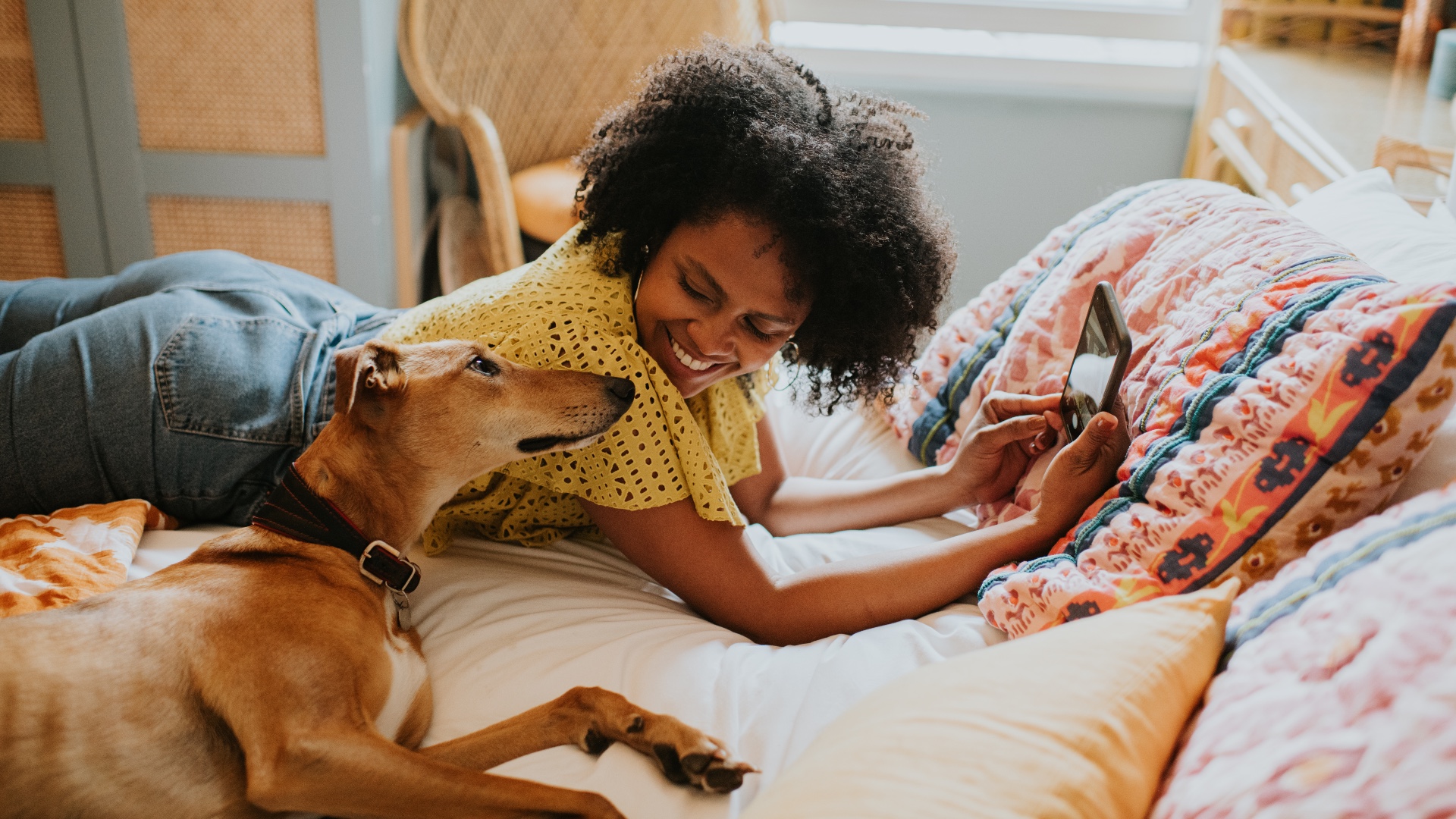
Does your dog have trouble settling when you are in meetings, making meals, or enjoying quiet time in the evening? If so, you're not alone. We often mistakingly believe that dogs come with the ability to relax built into them, but the truth is, being able to switch off and chill out is a skill we need to teach them.
You might be surprised to learn that some of the most common issues we hear dog owners expressing frustration around, such as reactivity in dogs, are often the result of a pup not having learned how to switch off properly when they're in the home.
Thankfully, expert trainer Lyz Knight has shared a video to Instagram where she reveals the three key elements she focuses on when reinforcing relaxation. Check out the video below or keep reading for a summary of each step.
Step 1: Meet their needs
"Our dogs can't relax if they haven't had their physical, mental, and emotional needs met," explains Knight. "This might mean a sniffy walk, a playdate with a dog friend, games or puzzles at home, or whatever an individual dog needs to feel safe and fulfilled."
Step 2: Give them a comfortable spot to relax
"My dogs love their soft cushioned beds so I make sure they have a few available in whatever room I am in."
Step 3: Calmly reinforce behaviours you want to see more of
"For relaxation this might mean laying on their bed (or even standing on their bed at first), putting their head down, or relaxed body muscles," says Knight. "The more I reinforce relaxed behaviours, the more those behaviours are likely to happen in the future."
Knight says that when we as dog owners take time to ensure our dog's needs are met, that they have a comfy place to rest and that we've reinforced resting as a positive behaviour (the best dog treats are great for this) then the result is a calmer dog that chooses to chill out.
If you find that after a few months of trying out Knight's tips that your dog is still struggling to switch off, we recommend reaching out to a professional trainer for some 1:1 support.
For more great canine training tips, be sure to check out our guides to how to calm a reactive dog and how to stop a dog pulling on a leash.







